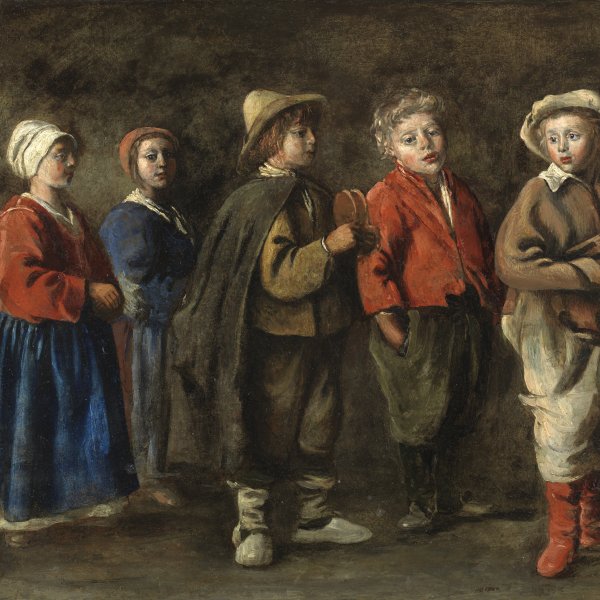Antoine Le Nain
Laon, ca. 1600-Paris, 1648
Antoine Le Nain was born in Laon around 1600 and is considered a more important artist than Louis and Mathieu, his brothers, who were also painters. With regard to their studies it is only known that they were trained by a “foreign artist”. None of Antoine’s works of his initial period in Laon have survived as a large number were destroyed during the Terror in 1793. The brothers moved to Paris after 1629, settling in Saint-Germain-des-Près where they opened a studio. They soon acquired a solid reputation, particularly in the genre of portraiture, and received a large number of commissions, which encouraged them to take on apprentices. Antoine was admitted as a master in the Corporation of Painters of Saint-Germain-des- Près in 1629, and in 1632 was commissioned to execute the traditional group portrait of eight members of the city council, earning him the title of the Painter to the City of Paris. The three brothers attended the first meetings of the new Royal Academy of Painting and Sculpture in March 1648, and were admitted as founder members. Antoine and Louis died two months later and were buried in the church of Saint Sulpice in Paris.
Despite numerous efforts by scholars, the attribution of the works to the three different hands of the brothers continues to be extremely difficult as their few signed works only bear their surname while those that are dated correspond to the period 1641 to 1648, during which all three were active. Antoine has traditionally been thought to execute small-format paintings and portraits, while Louis painted scenes of peasants and Mathieu historical scenes and religious works. The paintings associated with Antoine are small in size and mostly on copper. They depict groups of figures, generally bourgeois families at home, as well as some scenes of peasant families.
Despite numerous efforts by scholars, the attribution of the works to the three different hands of the brothers continues to be extremely difficult as their few signed works only bear their surname while those that are dated correspond to the period 1641 to 1648, during which all three were active. Antoine has traditionally been thought to execute small-format paintings and portraits, while Louis painted scenes of peasants and Mathieu historical scenes and religious works. The paintings associated with Antoine are small in size and mostly on copper. They depict groups of figures, generally bourgeois families at home, as well as some scenes of peasant families.





